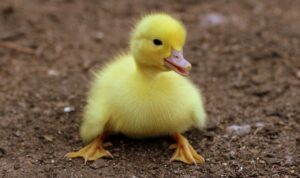FSB, Street No. 22, Punjab, Pakistan
Laying eggs is a well-known behaviour among birds. In reality, eggs are a staple in the diets of the majority of the population. Wild birds, on the other hand, produce eggs that are far larger than the 50 grams that we typically ingest. The following is a ranking of the world’s top five largest egg-laying birds.
Ostrich
The biggest bird lays the biggest eggs. Many of you already know that the ostrich is an African bird that can’t fly. Arid and semi-arid parts of the continent are where you’ll find them. They were once widespread throughout Asia Minor, but poaching led to their eradication. Because of its powerful legs, few predators are afraid of the ostrich in the wild.
Certainly, the ostrich’s legs are among the most powerful in the wild. A single kick from an ostrich may kill a human or a predator like a lion, making it one of the most lethal birds in the world. Because their primary diet consists of seeds and leaves, however, they rarely engage in a full-scale attack mode. However, if they feel threatened or if a predator tries to steal their eggs, they become violent.
In terms of egg size, ostriches are the largest birds on the planet. The eggs are over 13 centimeters wide and 15 centimeters long and weigh more than 1.4 kg. Kristan and Gunnar Sahlin’s farm in Sweden has the Guinness World Record for the heaviest live egg at 2.5 kg.
Emu
Both the ostrich and the emu share a similar genetic make-up, which explains why they are the world’s second-largest birds of prey. This shows that emus are also unable to fly, making it evident. A distinctive emu is featured on the coat of arms of Australia. Australia is home to emus, which may reach heights of up to 1.9 meters. They can sprint up to 50 kilometers per hour with their muscular legs.
Emu’s breeding season is unique in that it is the females who compete for mates and the males who take care of the nesting tasks, unlike most other species. It is possible for the female to lay two or three clutches per year if she can find a mate.
Emu eggs are so large that they can weigh up to 650 grams. An Emu’s eggs may look like those of a dragon at first glance! They’re a dark green tint, and their polished appearance can make them appear much darker. When it comes to their meat, leather, and feathers, Emus are a valuable commodity. Despite the fact that their feathers lack the luster of other birds‘, they nonetheless command a high price due to their exceptional softness. Consequently, other nations raise Emu instead of Australia.
Cassowary
However, the cassowary, like the ostrich and the emu, lays large eggs that are usually bright green or pale green-blue in color, making it the third species on this list. There are only two places in the world where cassowaries can be found: New Guinea and North East Australia. They are the second-heaviest and third-tallest birds in the world, after the ostrich and the emu, respectively. However, they are an omnivore and eat mostly fruits.
Even World War II troops stationed in New Guinea were warned about the dangers of cassowaries, a unique fact regarding the bird species. The primary cause of concern is their large and vicious claws and feet. Claws as long as five inches can be found on the second/middle toe of each foot. Self-defense or attacks on people who fed them and then asked for more are the most common causes of cassowary assaults in Africa. A cassowary has been documented to have killed a kid by puncturing his neck in self-defense. Despite their aggressiveness, they’re threatened in most natural settings.
The bird’s desire for a tropical rainforest habitat has thwarted attempts to reproduce it in captivity. To avoid the extinction of the cassowary, mankind must protect its environment. Large members of the Ostrich, emu, and cassowary family such as the rhea also produce enormous eggs.
Trumpeter Swan:
There are few birds in the world that have a wingspan as enormous as the trumpeter swan, making it one of the world’s largest flying birds. An adult trumpeter swan produces 350-gram eggs, making them the heaviest of all flying birds’ eggs. The Andean condor’s egg is the next largest, however, it weighs around 20% less than the Swan’s. Alaska and Canada have wild trumpeter swans.
During their quest for ideal mating habitats, swans have traveled an extremely great distance. Breeding occurs primarily in the eastern half of the continent. In addition to being one of the heaviest flying birds, the trumpeter swan is also one of the most aesthetically pleasing.
Kiwi
This list includes the kiwi, even though it is not one of the largest birds in the world, because it produces the largest egg in relation to its size. Almost 20 percent of the bird’s weight is in the egg. The reason why the kiwi lays so large eggs is still a mystery to scientists. The kiwi, a flightless bird native to New Zealand, is a cautious and timid species that prefers to burrow deep into the ground.
In addition, they have short, thick legs, hair-like feathers, and nostrils on the end of their long beak that help them identify prey. In New Zealand, the term “Kiwi” refers to the kiwi’s ability to lay huge eggs and its unique abilities.




